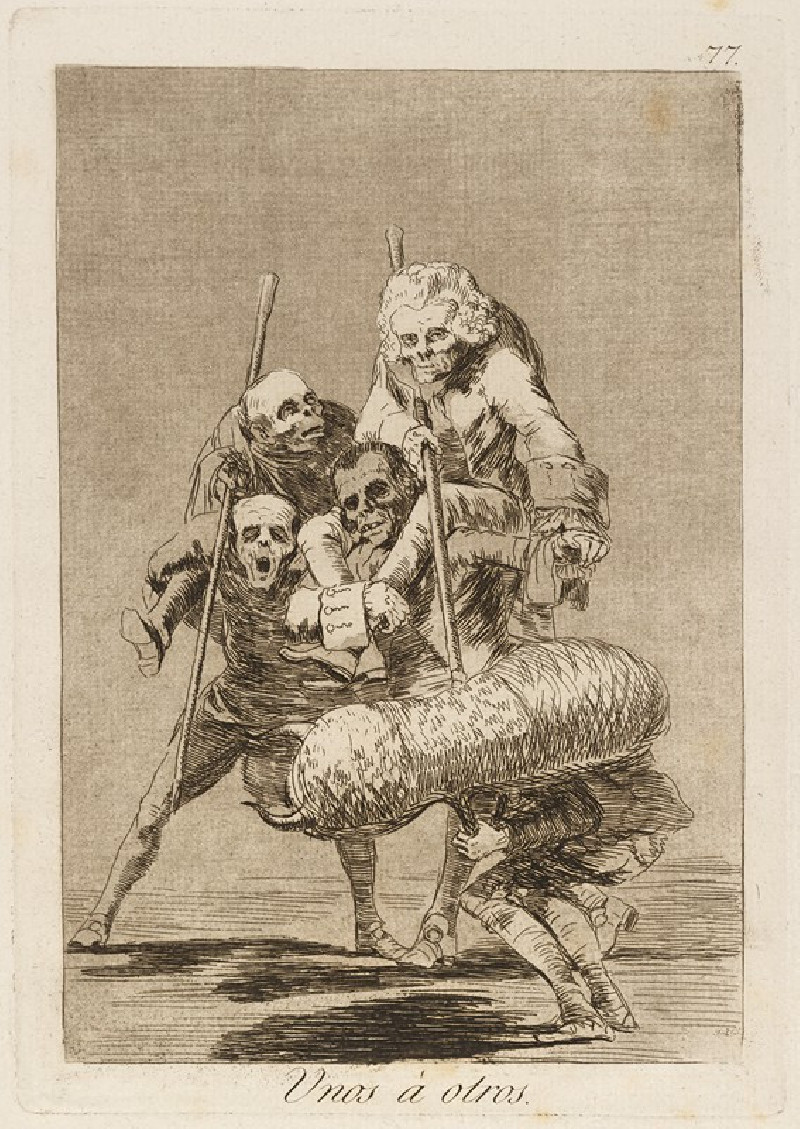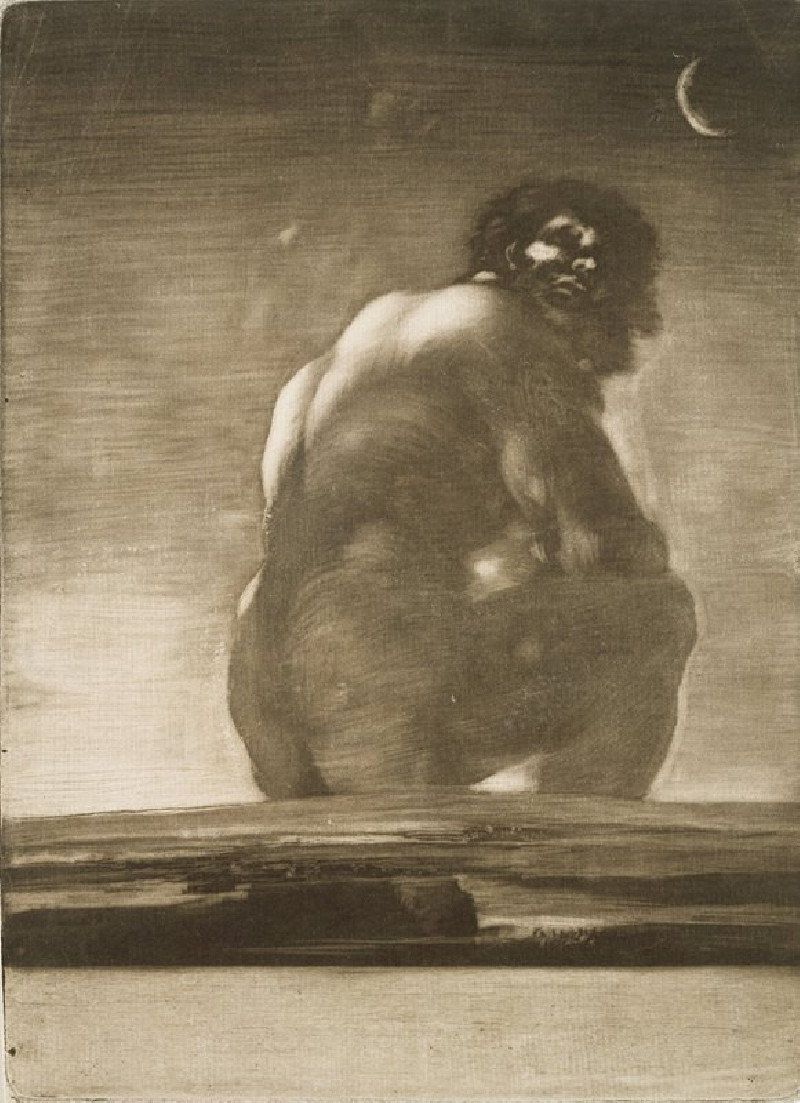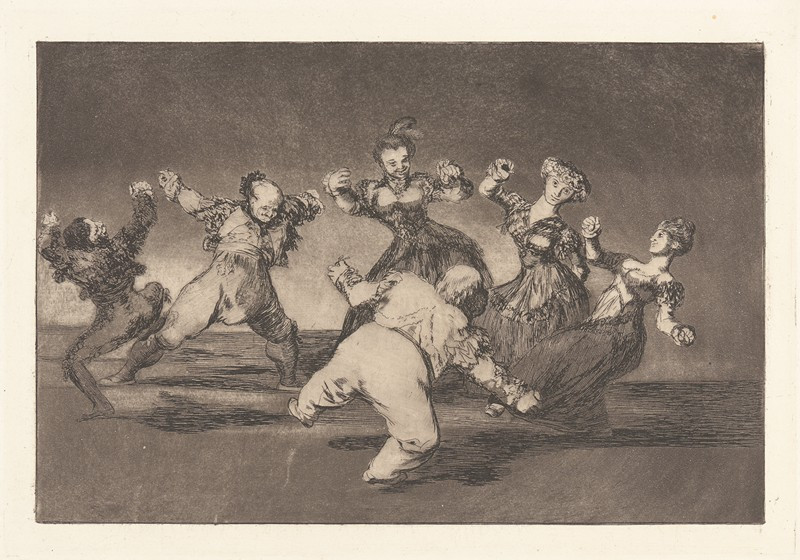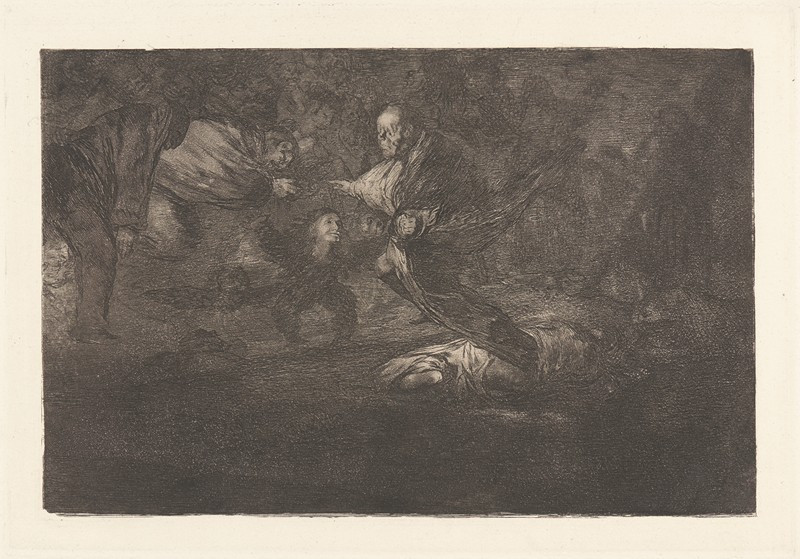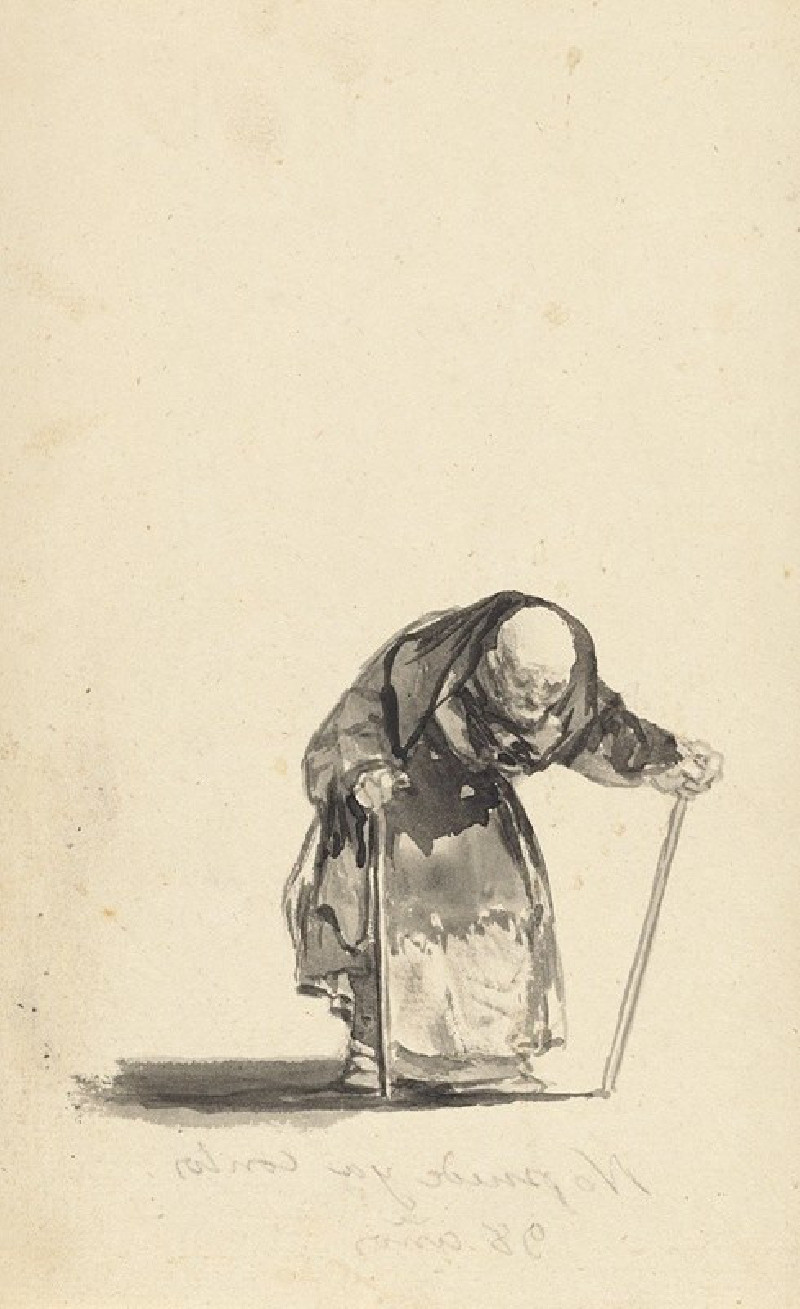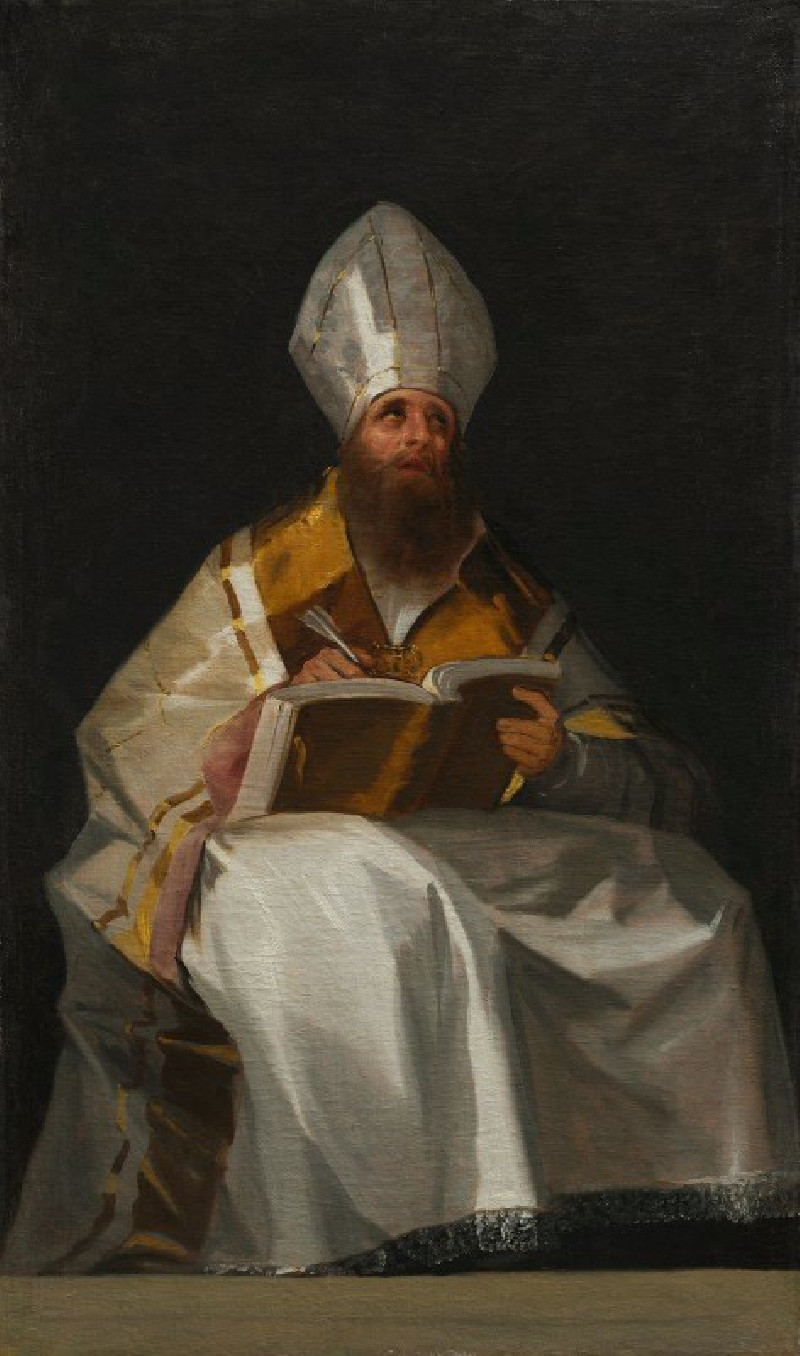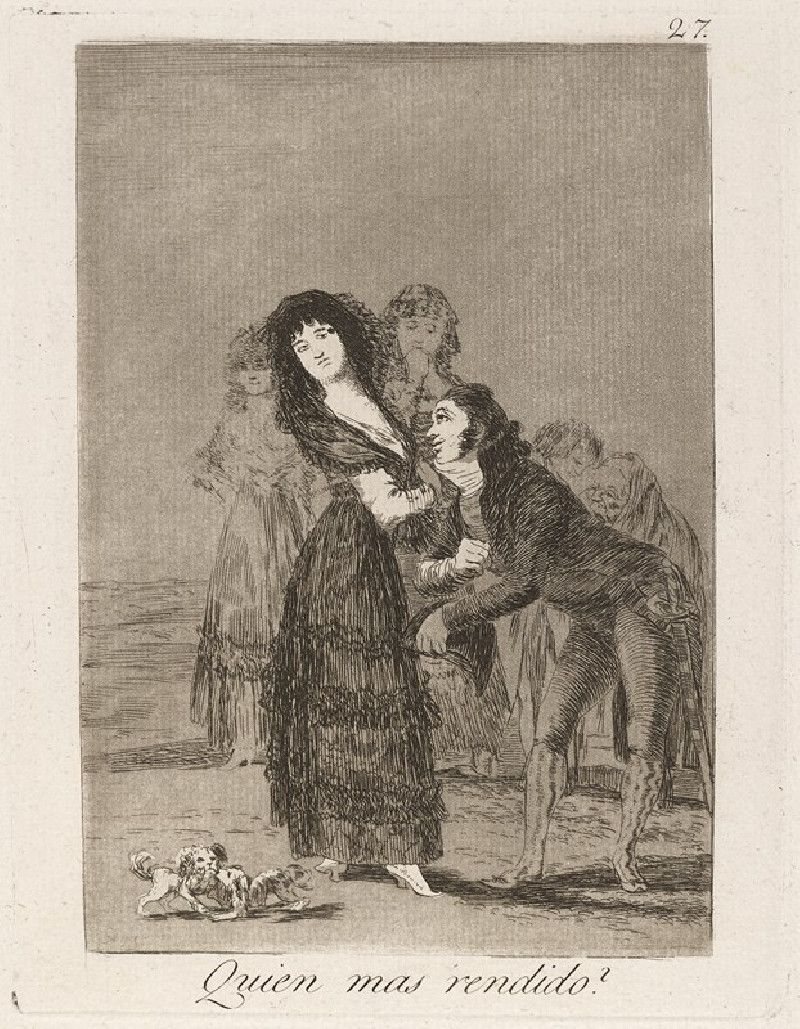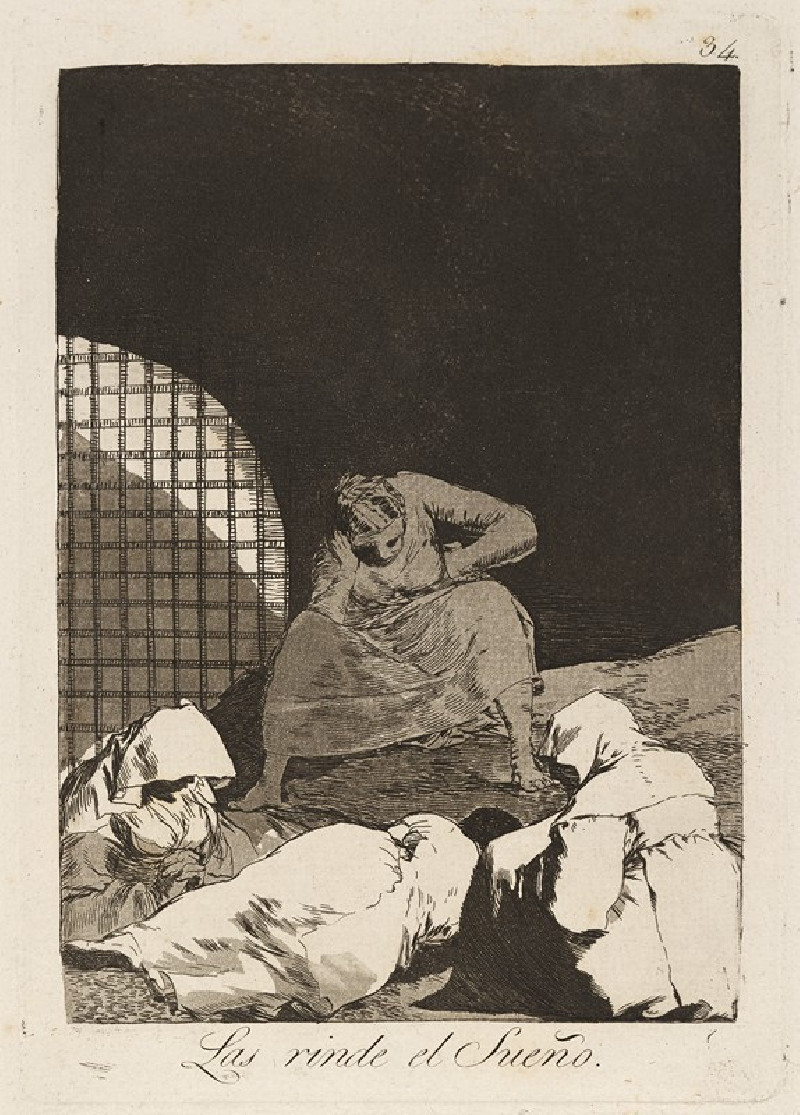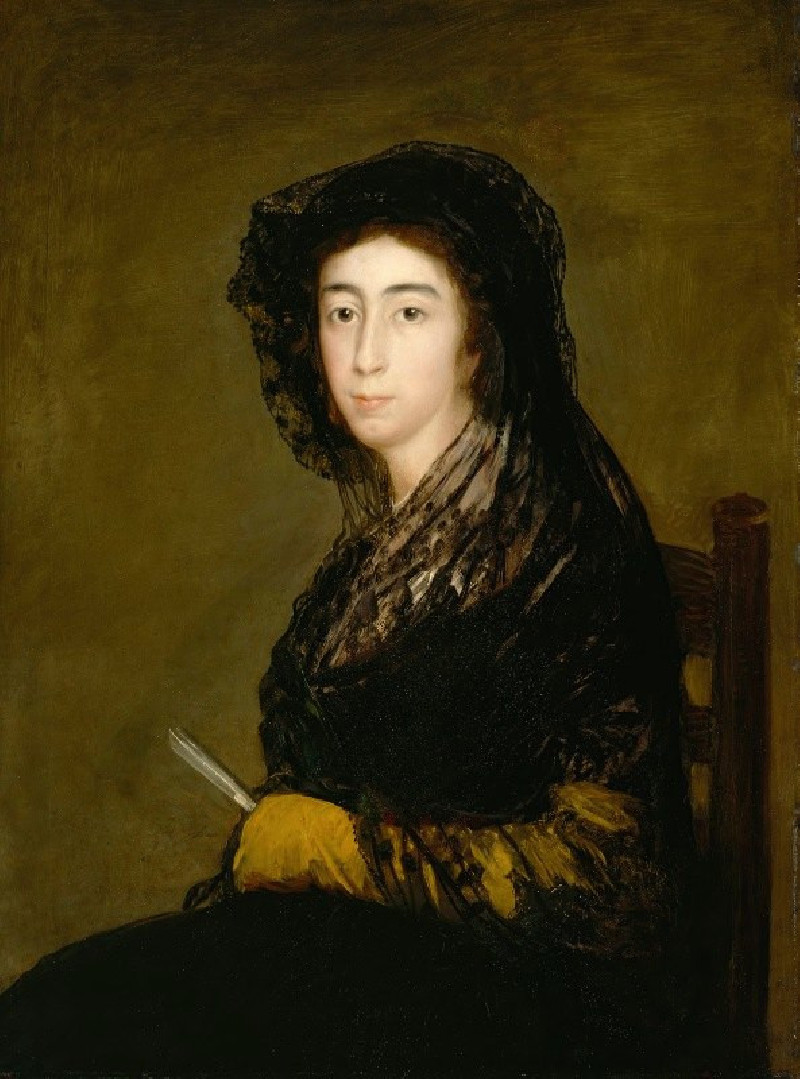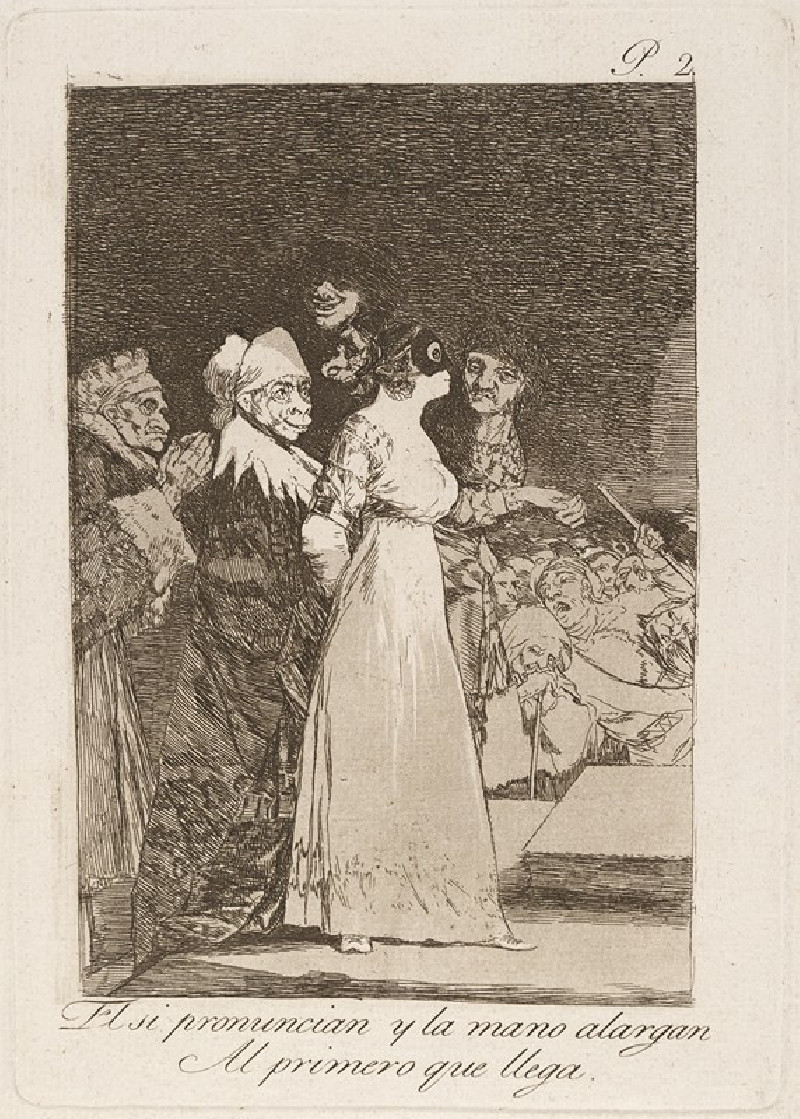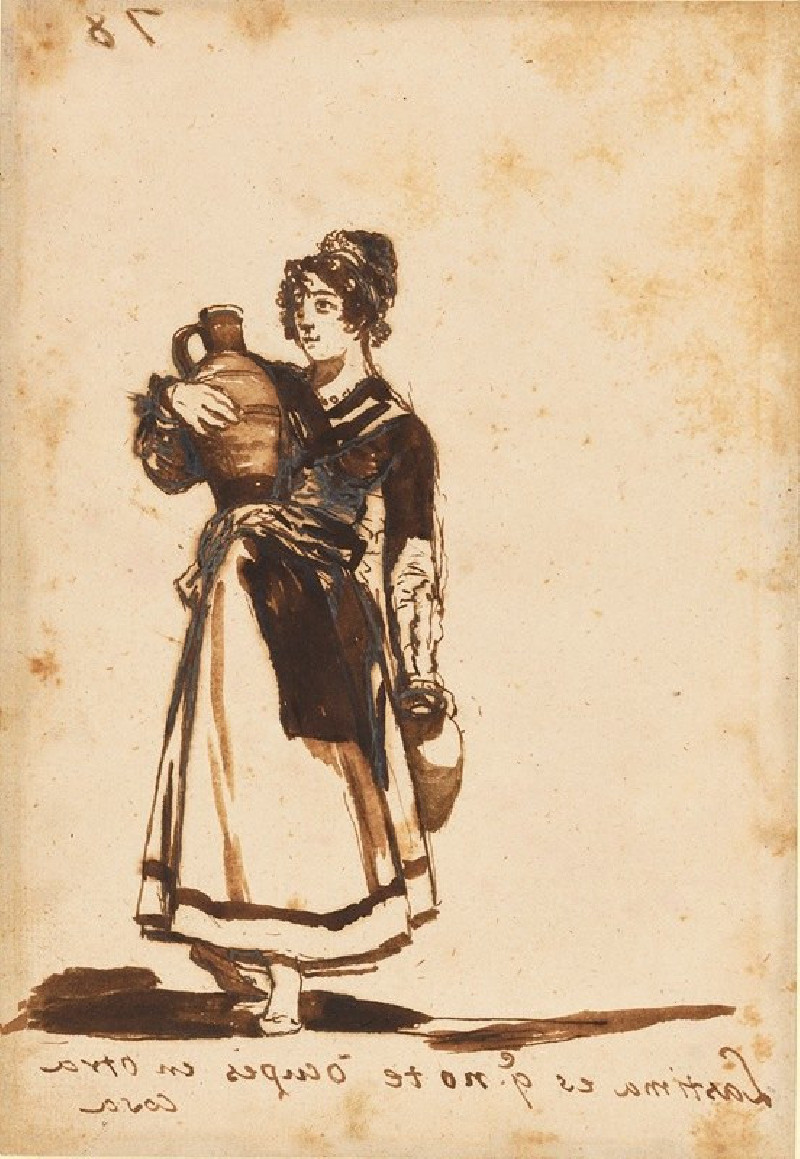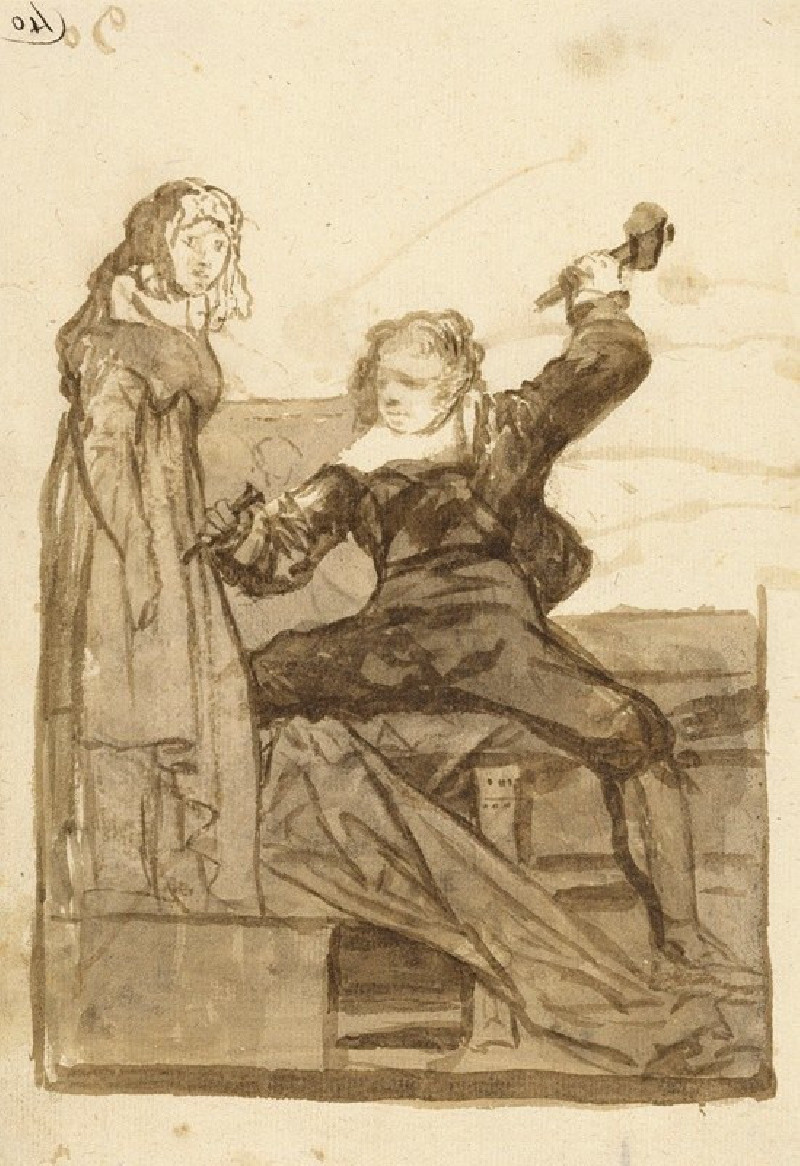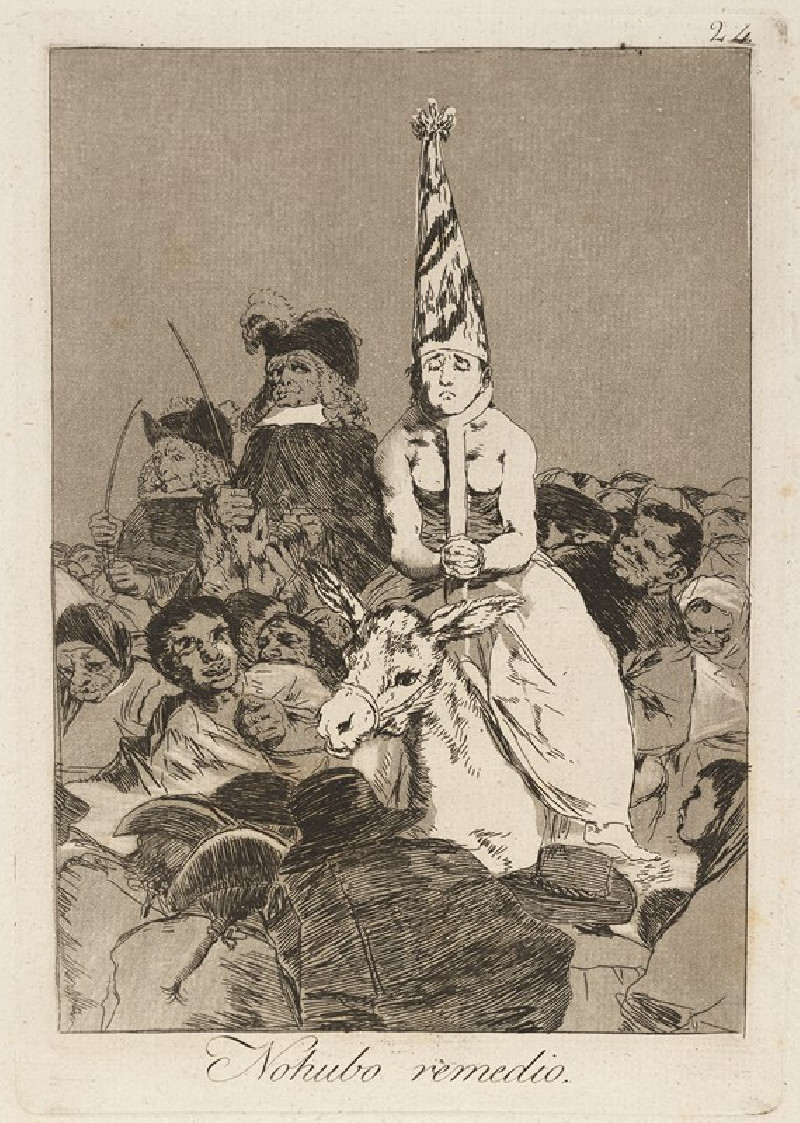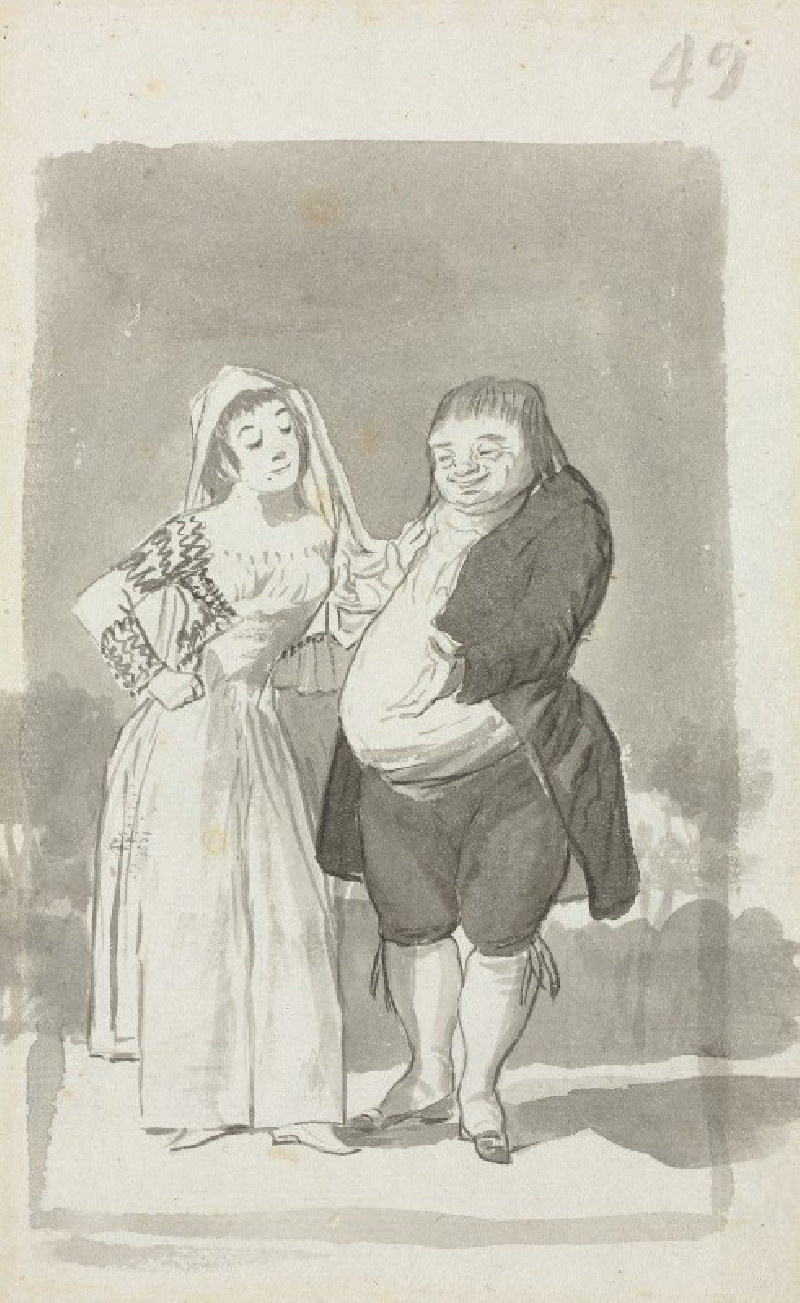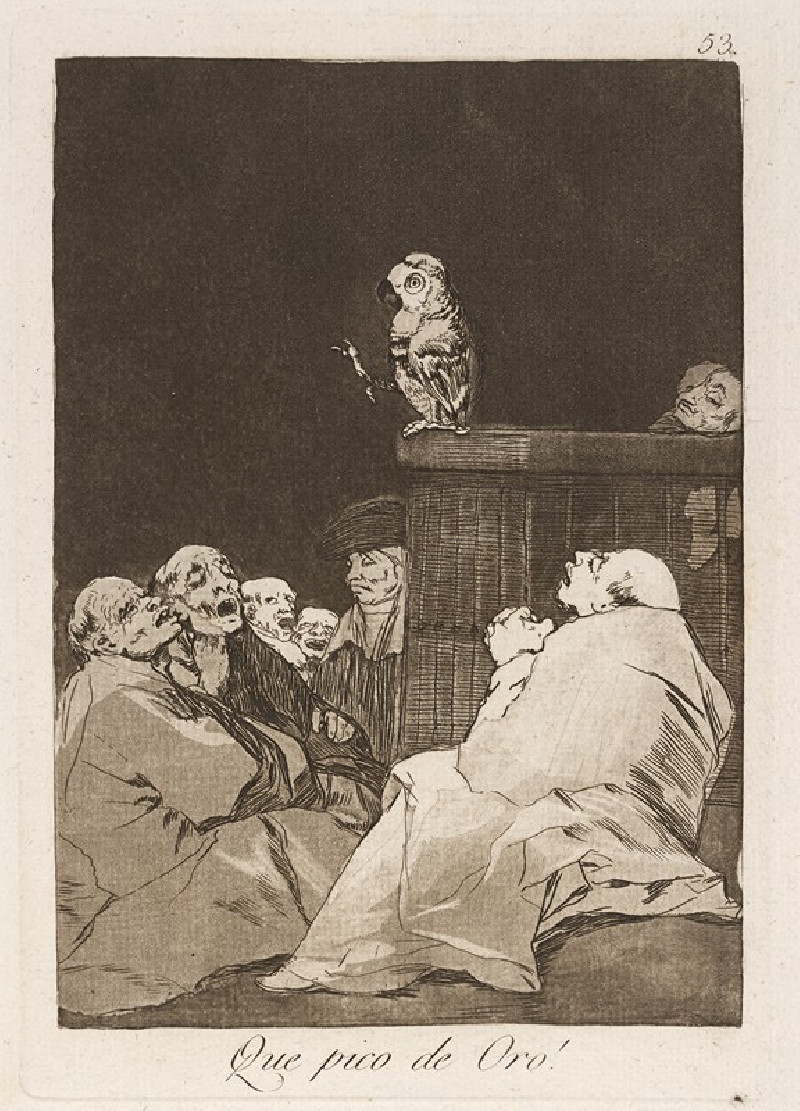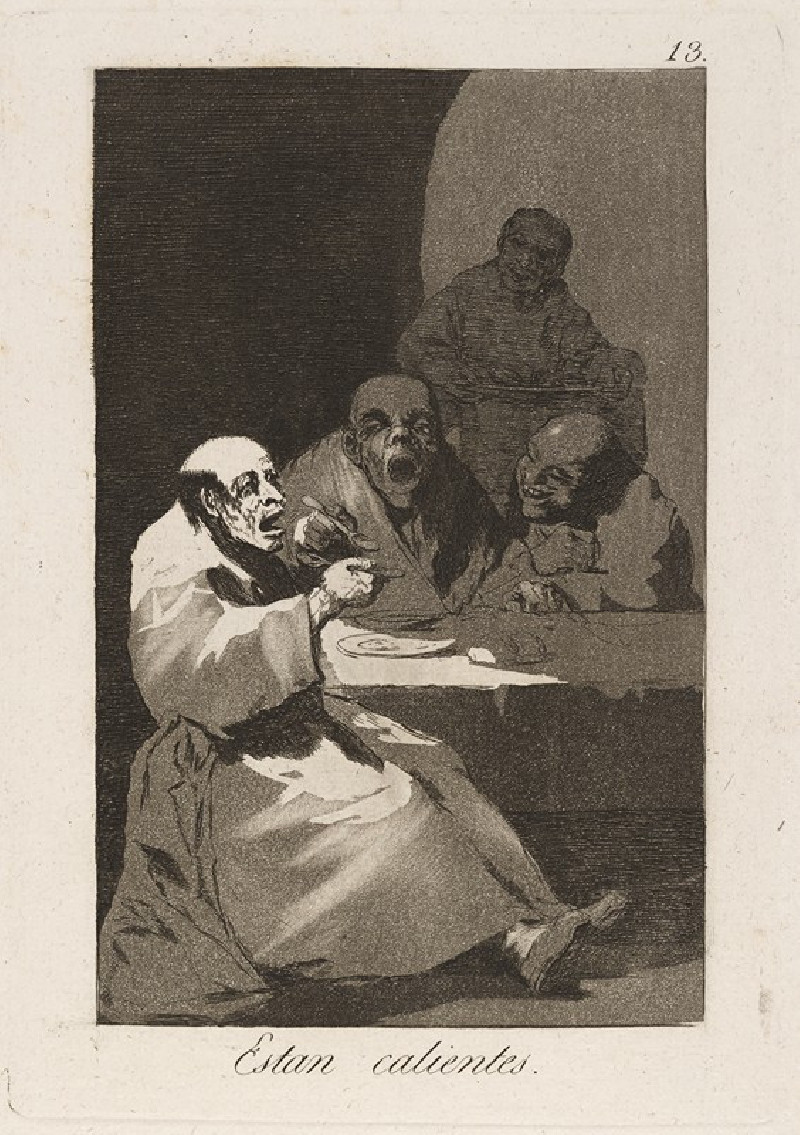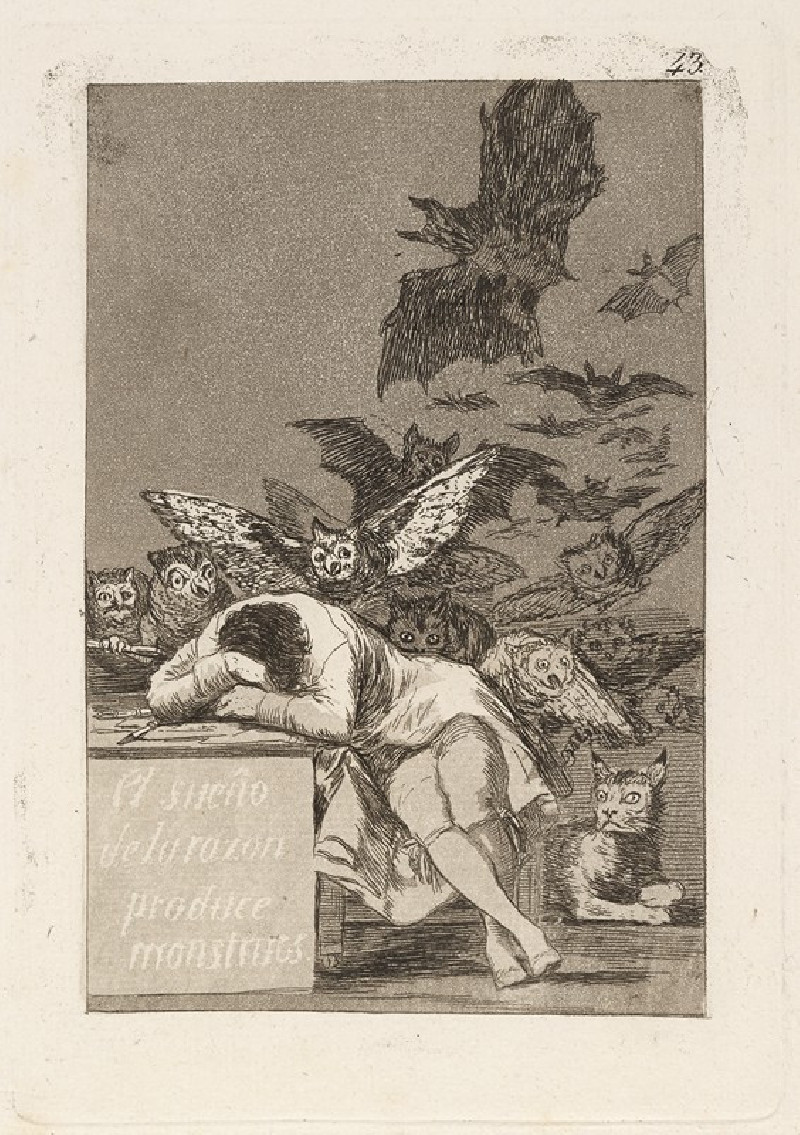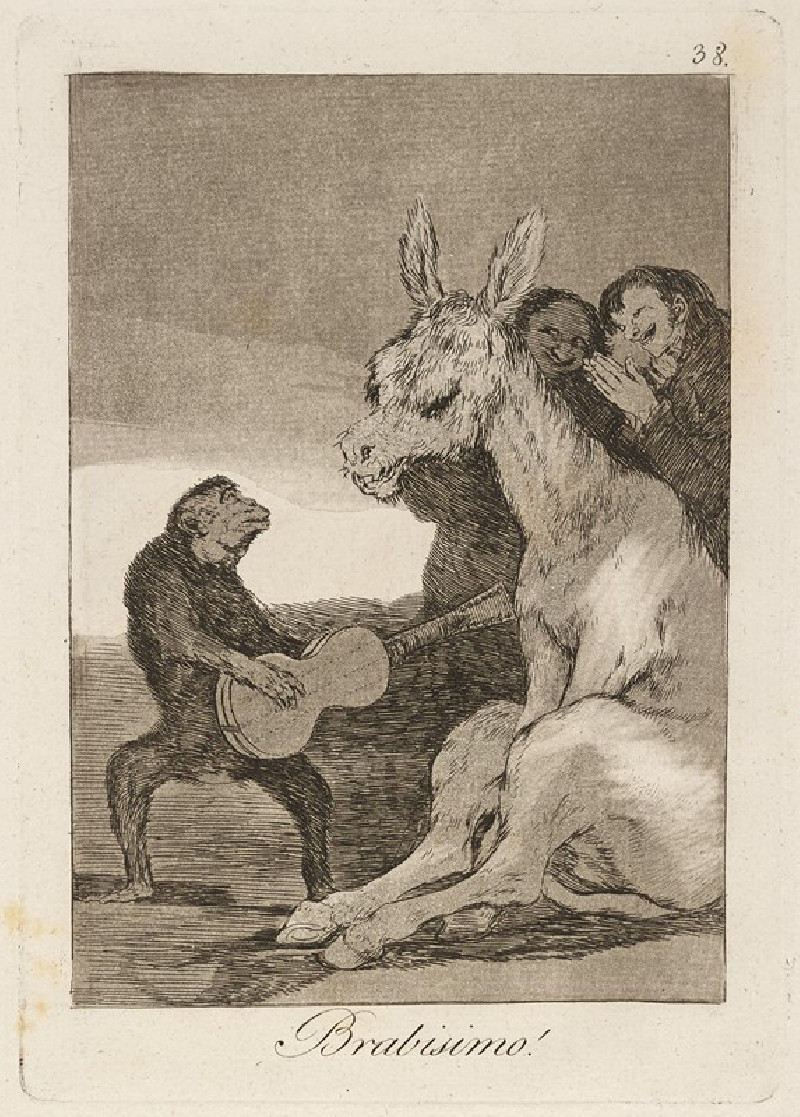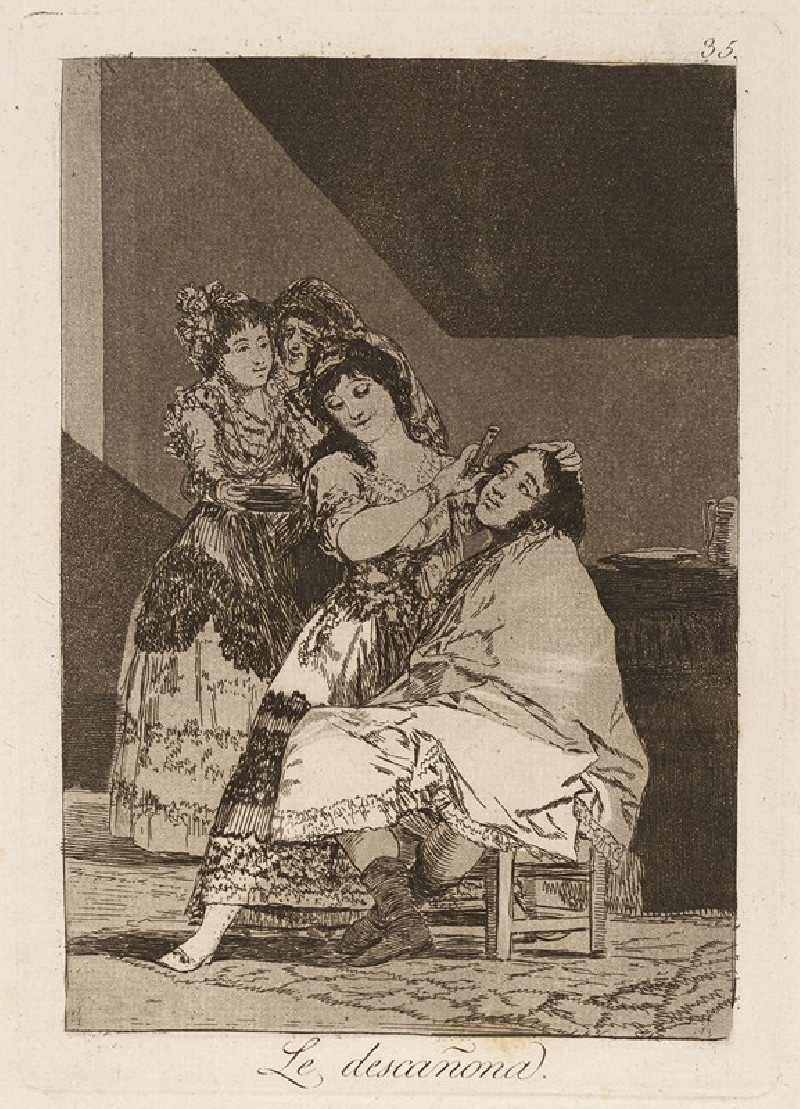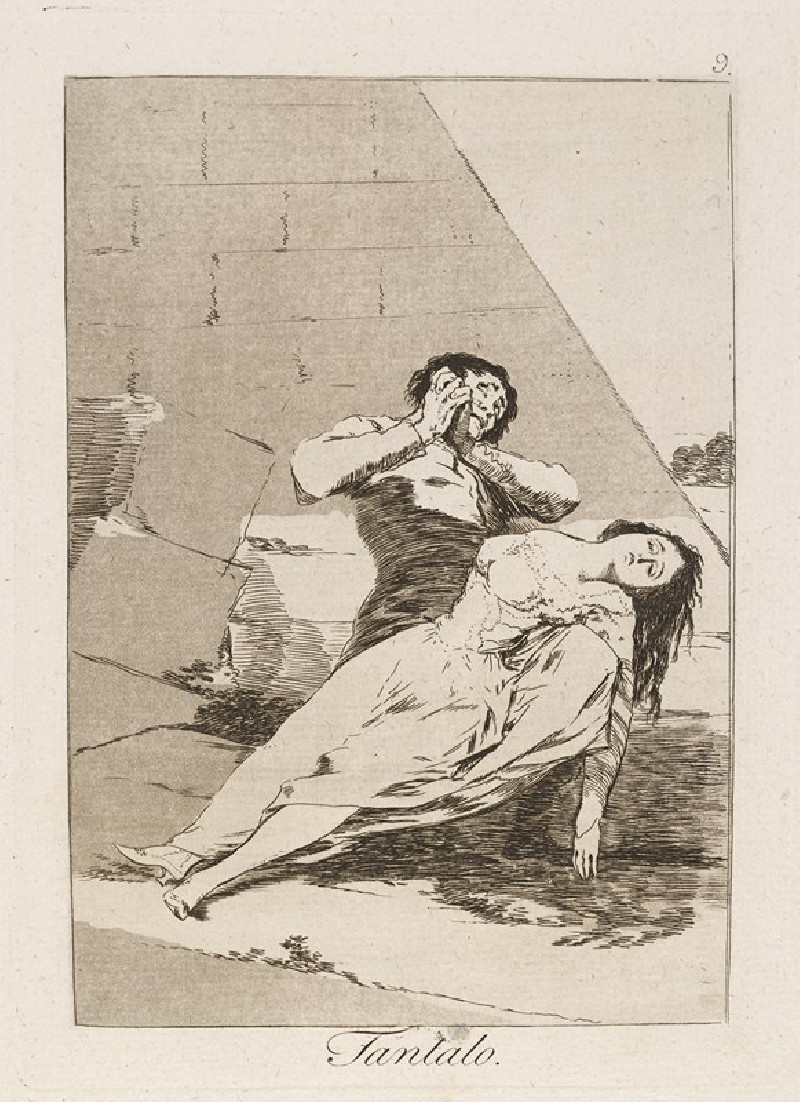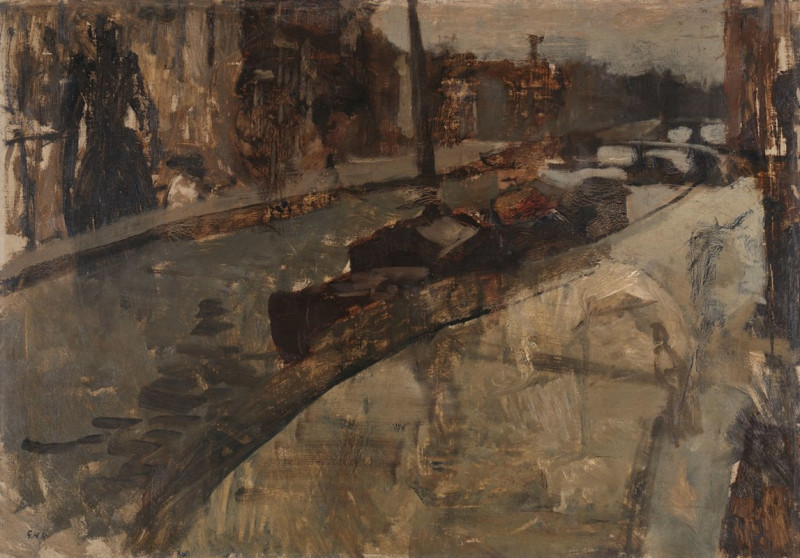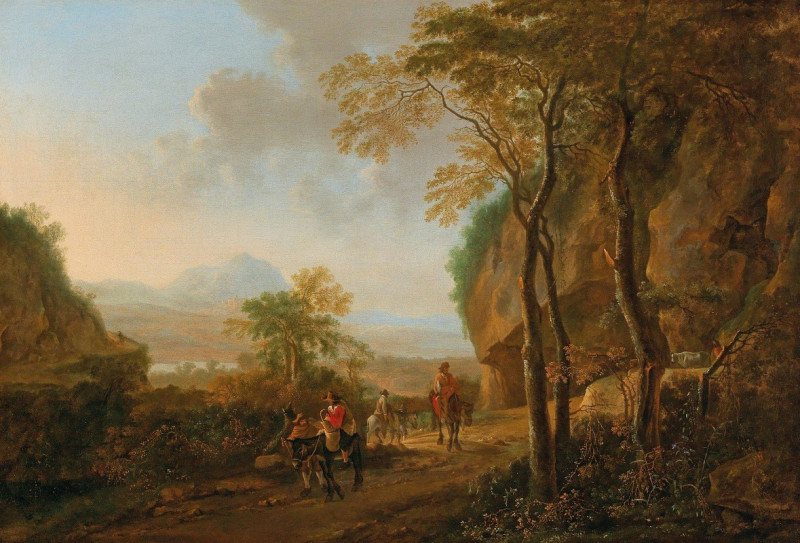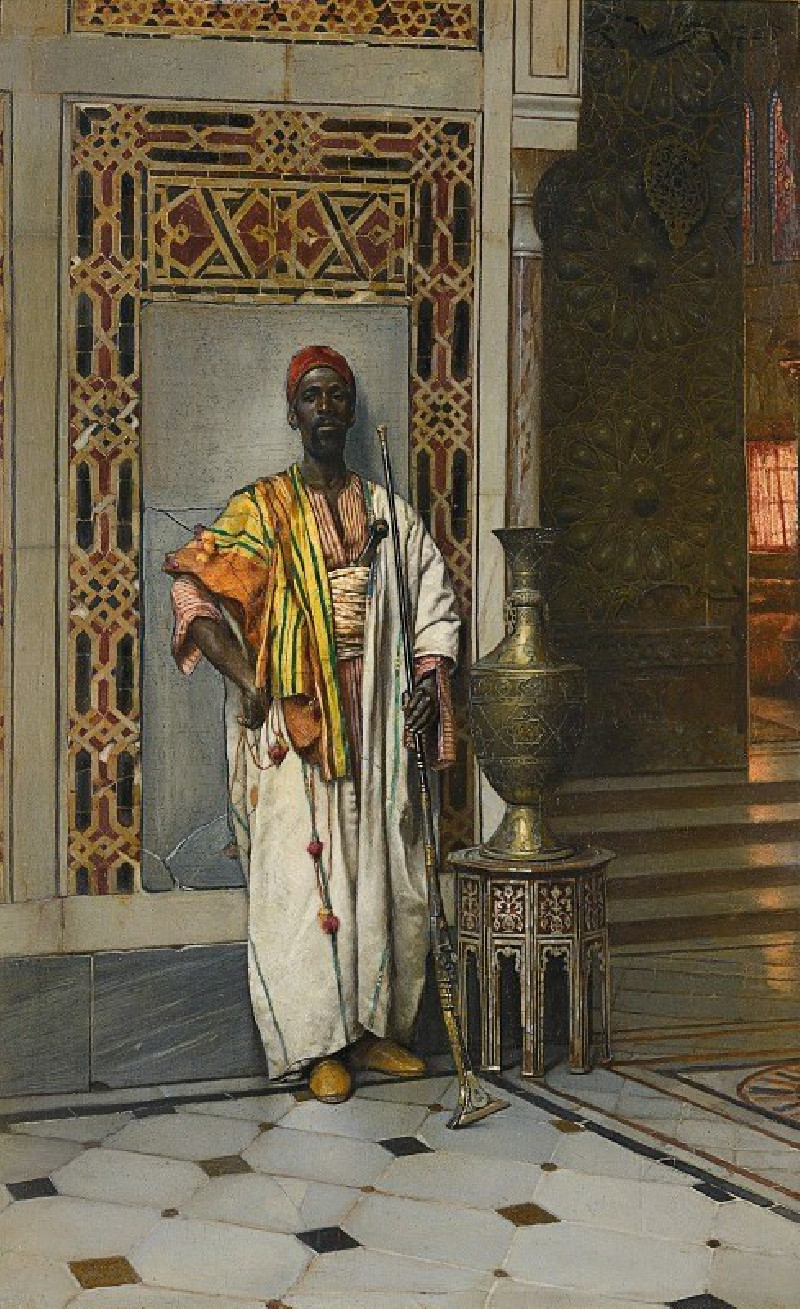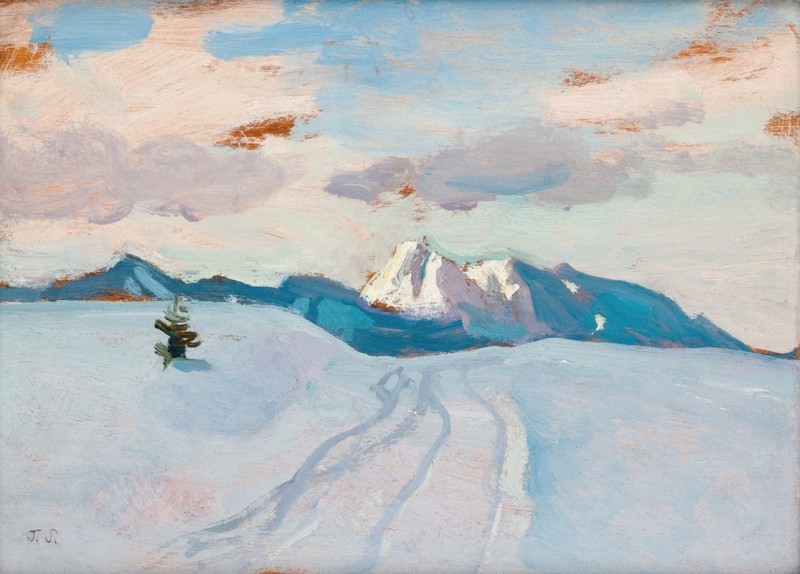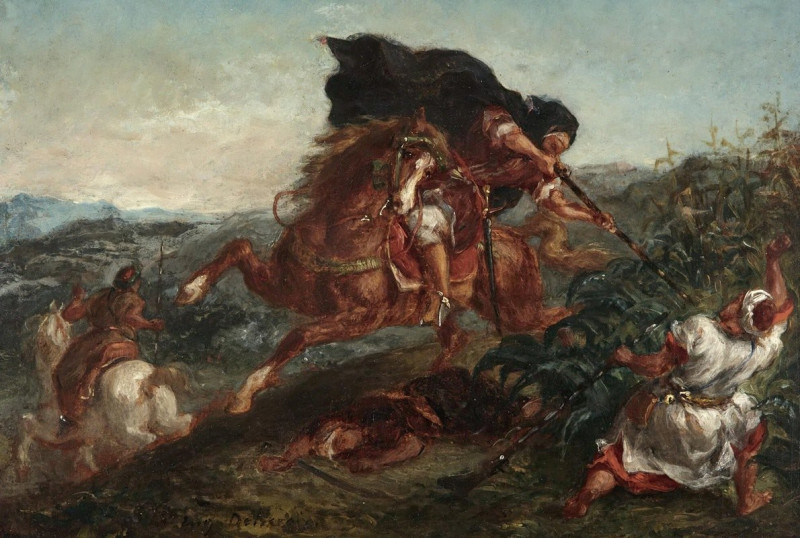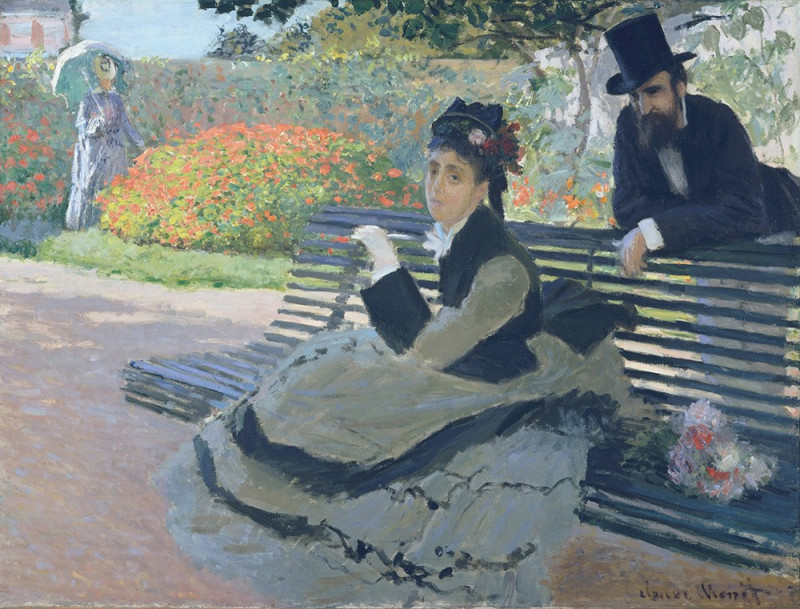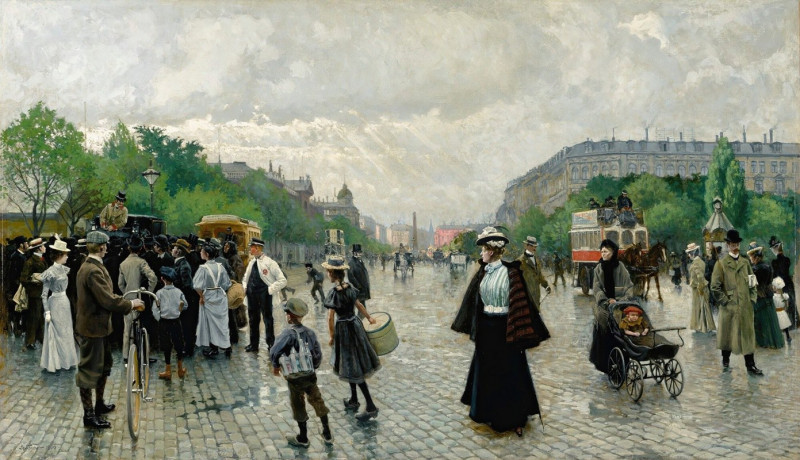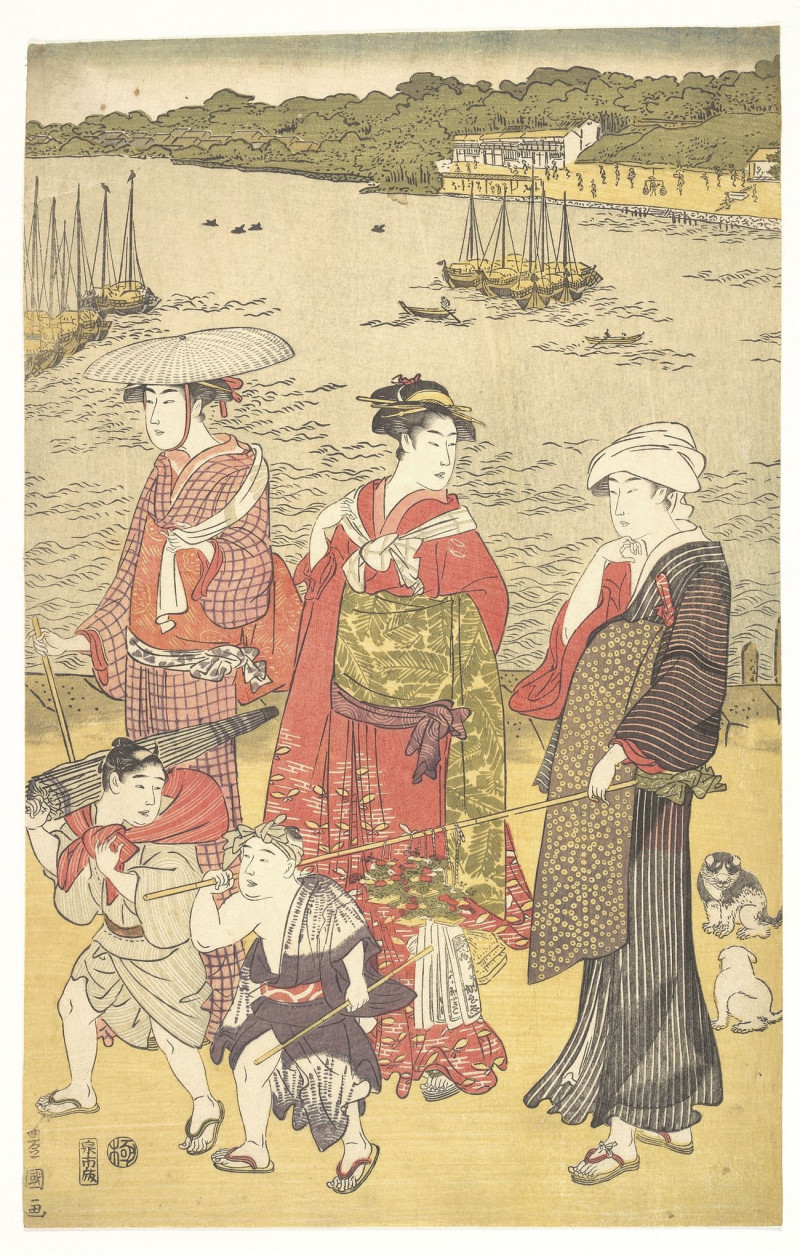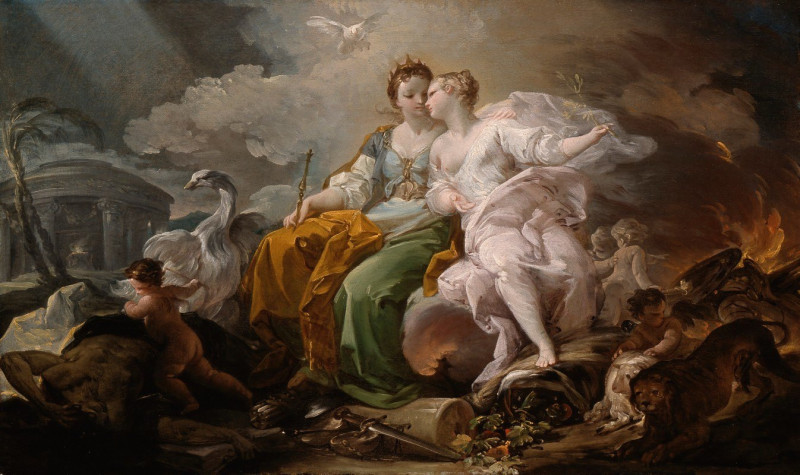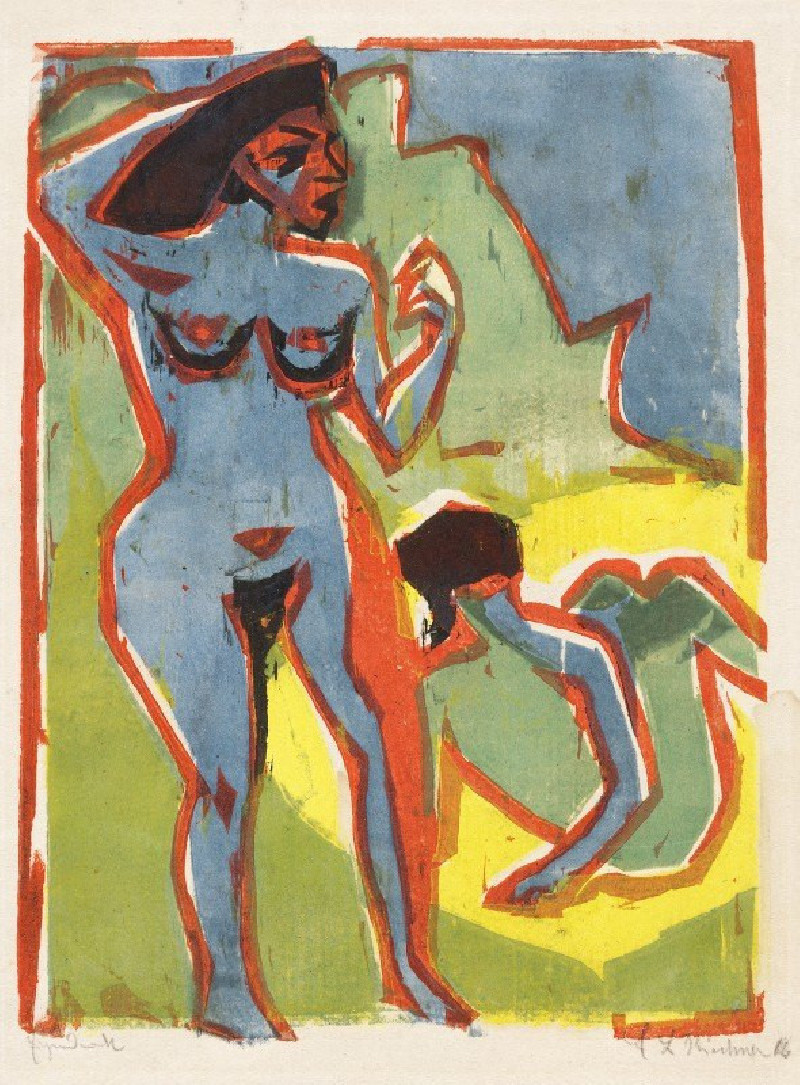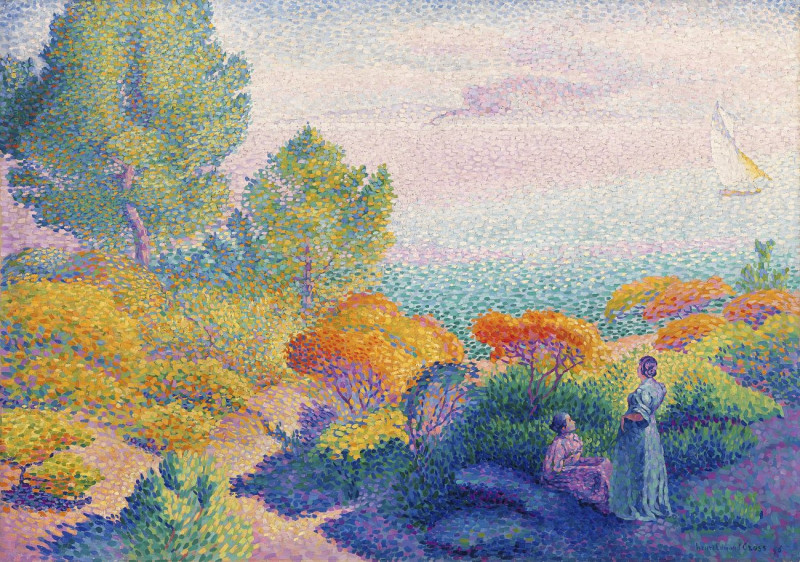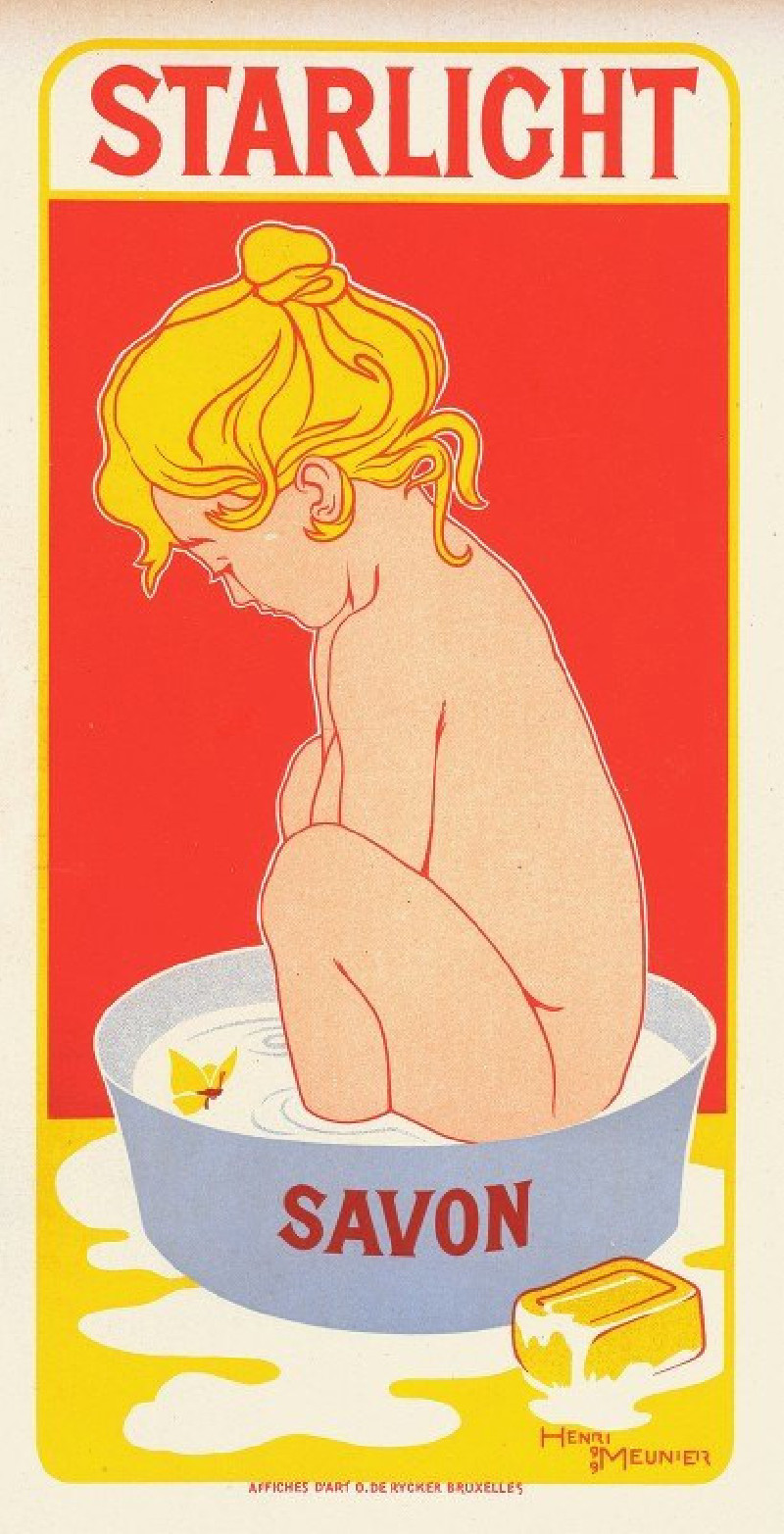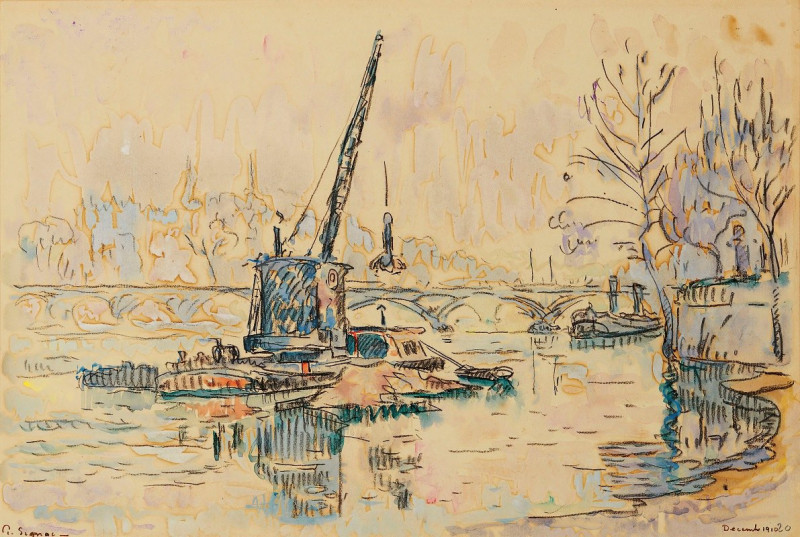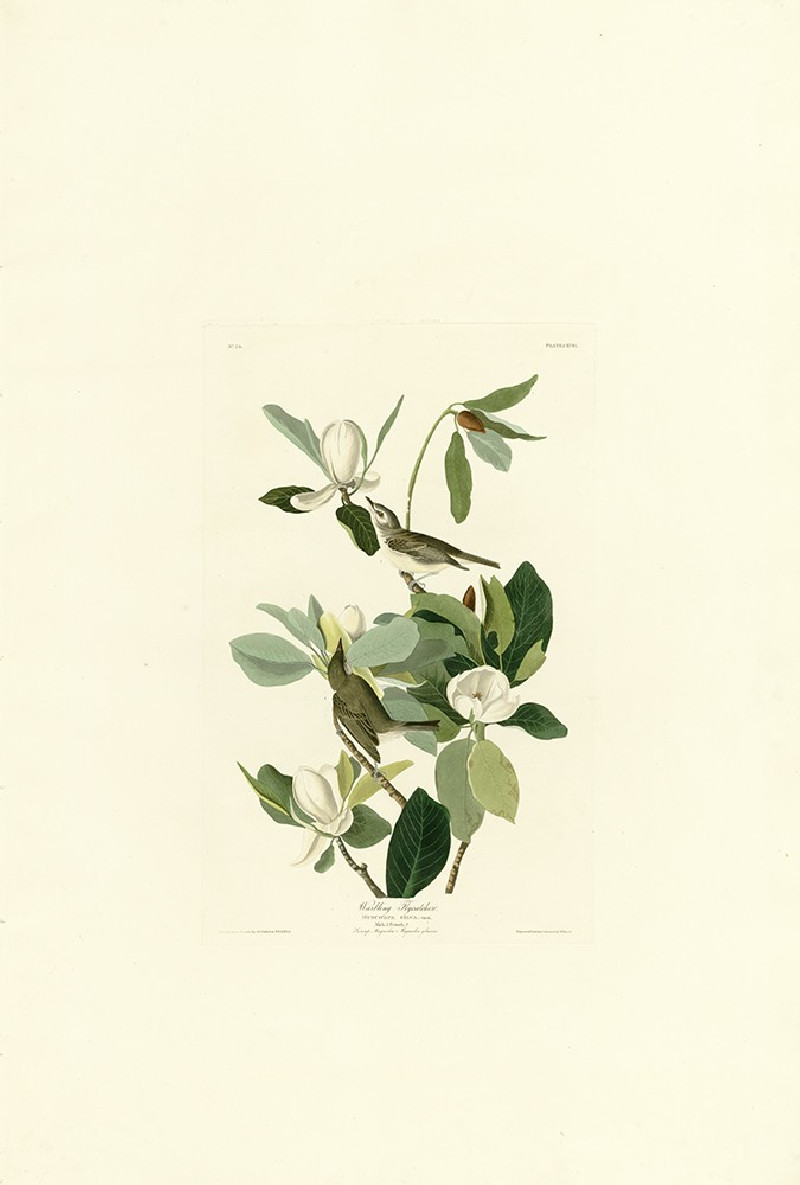Unos á otros. (What one does to another.) (1796-1797)
Technique: Giclée quality print
Recommended by our customers
More about this artwork
"Unos á otros" (What one does to another) is a compelling etching by the celebrated Spanish artist Francisco de Goya, created between 1796 and 1797. This work forms part of Goya's "Los Caprichos," a series known for its critical reflection on societal norms and human behaviors.The image presents a haunting scene with four figures in a grotesque and lively interaction, which compels the viewer to contemplate the darker aspects of human nature. The central figure, dominating the composition, rides astride the back of a hunched, burdened character, signifying exploitation or oppression. The looming figure brandishes a document—perhaps symbolic of decrees or laws—that further emphasizes a theme of authoritative or abusive control. Accompanying them are two ghastly, skeletal beings whose ghostly presence may represent death or the moral decay tied to the actions of the living characters.The intensity of the scene is elevated by the stark black and white tones, and the dynamic, almost frenetic lines that animate these figures. Goya's masterful etching thus not only serves as an artistic expression but also as a potent social commentary, critiquing the cyclical and often destructive nature of human interactions.
Delivery
Returns
Francisco José de Goya y Lucientes (30 March 1746 – 16 April 1828) was a Spanish romantic painter and printmaker. He is considered the most important Spanish artist of the late 18th and early 19th centuries. His paintings, drawings, and engravings reflected contemporary historical upheavals and influenced important 19th- and 20th-century painters. Goya is often referred to as the last of the Old Masters and the first of the moderns.

